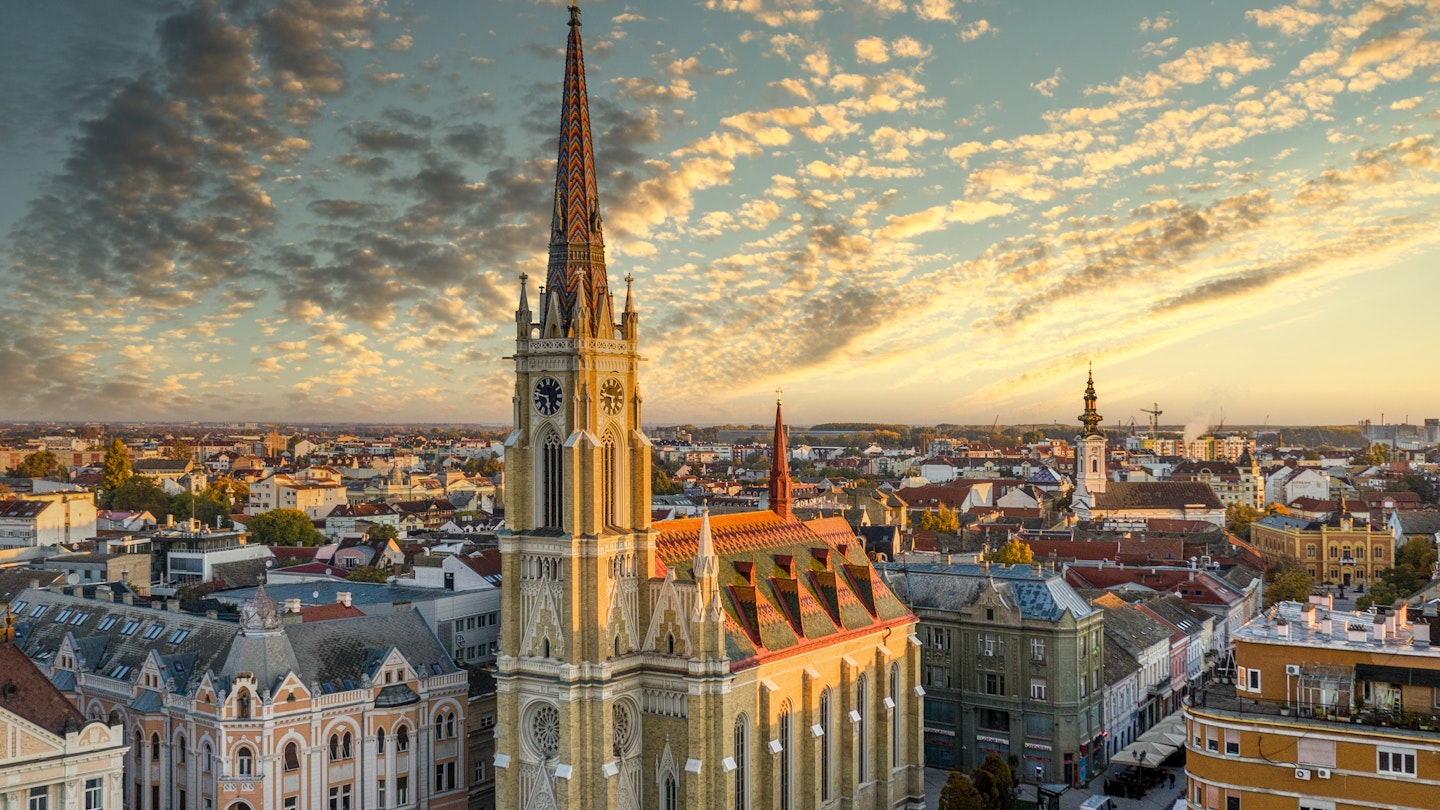Travel to Serbia: A Comprehensive Guide
Set along the Balkans’ spine, in between tourism heavyweights Croatia and Greece, landlocked Serbia isn’t exactly known for bucket-list appearances. However, the lack of crowds and globally recognizable Instagram-bragging snaps makes the experience of traveling here all the more authentic.
What you will find—and perhaps be surprised by—is diversity, both in terms of nature’s gifts and cultural influences stemming from a tumultuous history. Moreover, there’s more to Serbia than its ever-transforming capital. As you traverse the country, striking contrasts are revealed: from the Austro-Hungarian art nouveau of Subotica on the sunflower-coated northern plains to the Ottoman-era mosques of Novi Pazar in the windswept Dinaric highlands of the south. Bring your curiosity and hit the road.

When Should You Go to Serbia?
With four distinct seasons and year-round festivities, the best time to visit depends on your interests. The pleasant weather in spring and fall is ideal for hiking or mountain-biking in Serbia’s national parks and nature reserves. Belgrade’s packed cultural calendar, including the Belgrade Dance Festival in March and the renowned Bitef international theater festival in October, is complemented by exciting sports events.
Summers are scorching; therefore, rafting on Ibar or Lim rivers and kayaking in the Ovčar-Kablar gorge or Uvac canyon are great ways to cool off. Major summer music events include Exit in Novi Sad and the rowdy Guča trumpet festival in central Serbia.
During winter, enjoy skiing at Kopaonik ski resort or go snowshoeing on Golija to escape the crowded trails. The Drvengrad village in the western mountains also hosts the Küstendorf international film festival in January.
How Much Time Should You Spend in Serbia?
For a first-time visit, a long weekend allows you to dive into Belgrade’s vibrant urban scene with a day devoted to relaxing in Novi Sad, which is only a half-hour ride away by fast train.
A week is reasonable for exploring areas closer to the capital, including the northern Vojvodina province or central Šumadija region, rich in tradition and gastronomy, and known for thermal spas and wine routes.
If you have about 10 days, you can choose one or two of the national parks for hiking, cycling, and other seasonal activities, or road-trip through the more remote regions where traditional villages and historical attractions await.
Is It Easy to Get In and Around Serbia?
Serbia is well connected with most of Europe and beyond through Belgrade Airport, along with a smaller one in Niš. Additionally, solid long-distance bus services are available. For traveling between Belgrade and Novi Sad, consider downloading the Srbijavoz app for the fast train schedule.
If you prefer to explore by car, major car-hire companies operate at Belgrade Airport, and street parking is regulated by zones. For those using public transport, fares apply to buses, minibuses, trolleybuses, and trams.

Top Things to Do in Serbia
Discover Belgrade and Novi Sad’s Urban Landscapes
A city of many faces and past lives, Belgrade retains a touch of Yugoslav-era cool in its brutalist architectural showpieces. At Kalemegdan Fortress, contemplate its 2,300-year existence and then explore contemporary creativity, street art, and vibrant local gastronomy.
As the 2022 European Capital of Culture, Novi Sad boasts a Habsburg-flavored old town and the impressive Petrovaradin Fortress, which hosts the rocking Exit festival in July. Take in art galleries and perhaps catch a classical-music concert in the Secession-style synagogue.
Get Active in Tara and Đerdap National Parks
In Western Serbia, Tara National Park is a scenic corner of the Dinaric Alps, offering hiking trails and mountain-biking routes. The Drina River and Tara’s lakes are popular options for rafting and kayaking.
On the other hand, Đerdap National Park offers dramatic landscapes where the Danube cuts through limestone cliffs. The breathtaking scenery rewards cyclists, hikers, and boaters alike.
Experience Vojvodinian Gastronomy and Local Wines
Serbian cuisine, with its Mediterranean, Turkish, and Hungarian influences, is known for being seasonal and organic. Vojvodina province is a culinary highlight, where traditional homesteads and riverside taverns celebrate local flavors.
With a rich winemaking tradition, Serbia features numerous wine routes to explore. The hills of Fruška Gora are home to many family wineries known for native grape varieties.

Travel Through Time in Southern Serbia
Heading south of Belgrade, historical landmarks such as Studenica Monastery and Golubac Fortress offer a deeper insight into the country’s rich history. The WWII memorial complex of Kadinjača is an exemplary piece of Yugoslav socialist modernism.
Is Serbia Safe?
Despite misconceptions stemming from its past, Serbia is generally safe for travelers. You will be warmly welcomed in rural areas, which don’t often see foreign visitors. However, as with any major city, caution against pickpockets in Belgrade is advisable.

Are People in Serbia Religious?
While the landscape is dotted with monasteries and Orthodox faith is significant to national identity, not many Serbians practice religion actively. A mix of Catholic and Muslim minorities exists, further contributing to the country’s diverse culture.
How Much English is Spoken in Serbia?
The younger generation is typically fluent in English, and those in the tourism industry generally speak at least English, if not other major European languages. In rural areas, older residents may not speak English, but hospitality is abundant.
What Alphabet Do They Use in Serbia?
Serbian citizens utilize both the Cyrillic and Latin alphabets interchangeably. Both scripts can be seen on street signs and menus, reflecting the country’s rich cultural tapestry.





